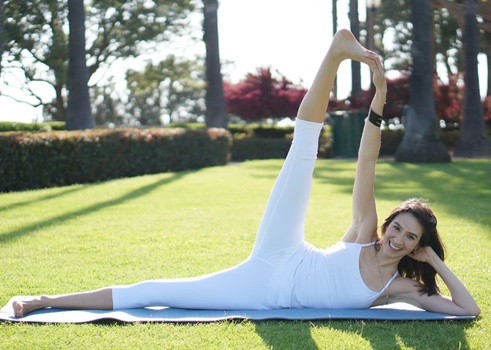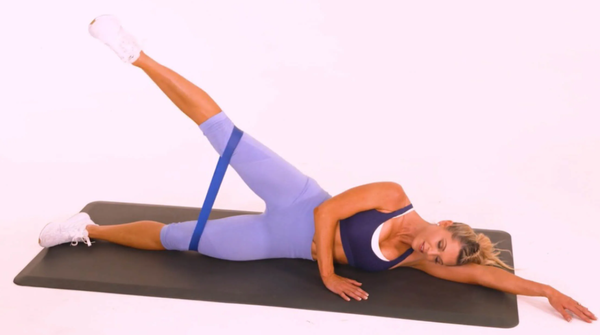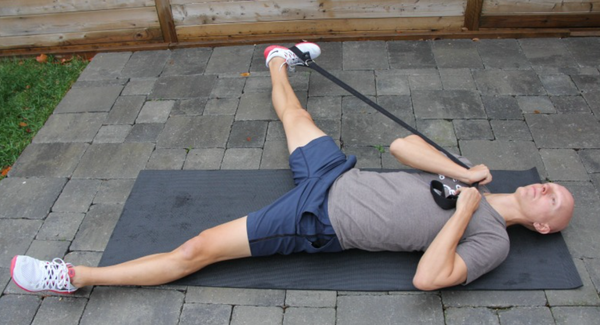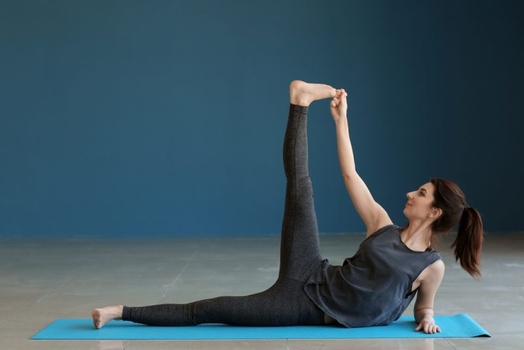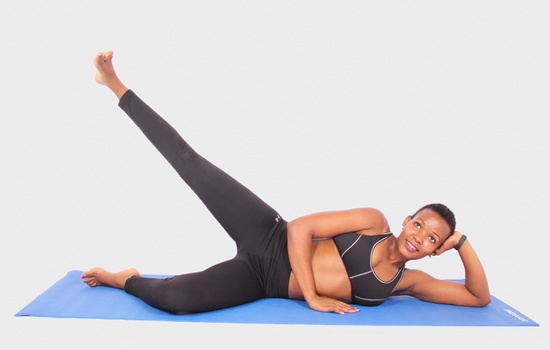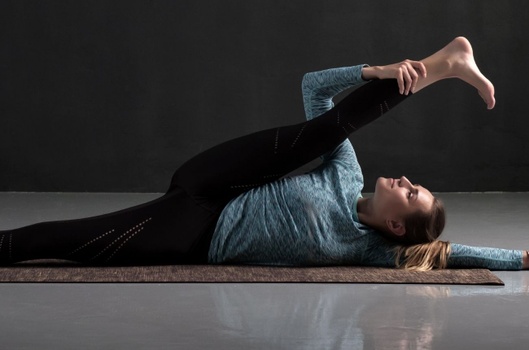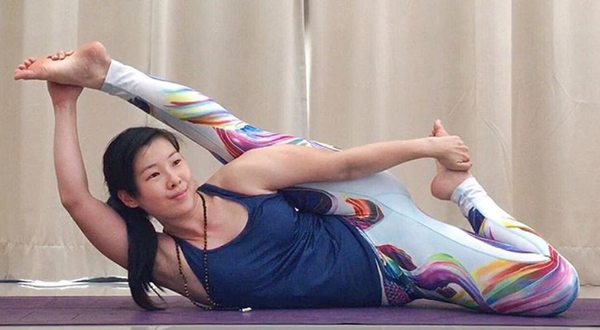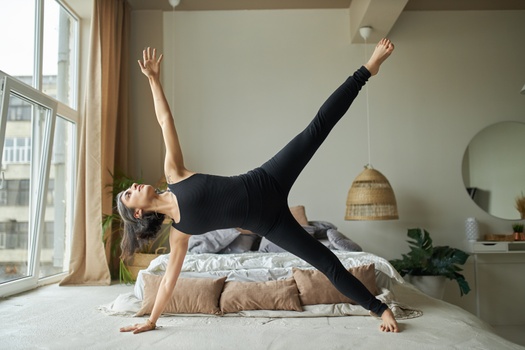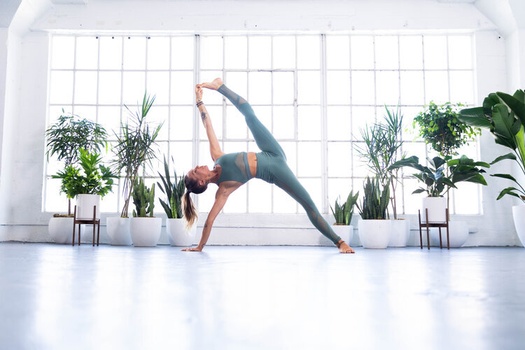To perform the sleeping Vishu pose, follow this four-phase practice which includes preparation, the asana, some posture cues, and a post-posture relaxation flow.
So, let’s dig in and discuss each segment in detail:
Part 1: Preparation for Anantasana
The Vishnu pose requires deep activation of the shoulders, tailbone, hip flexors, and core muscles. Below are some warm-up yoga poses to prepare:
1. Phalakasana (Plank Pose) - This is a classic pose to activate your core muscles. It will increase blood flow around your abdomen, obliques, lower back, and thighs, which will help prevent injury during your Vishnu pose practice.
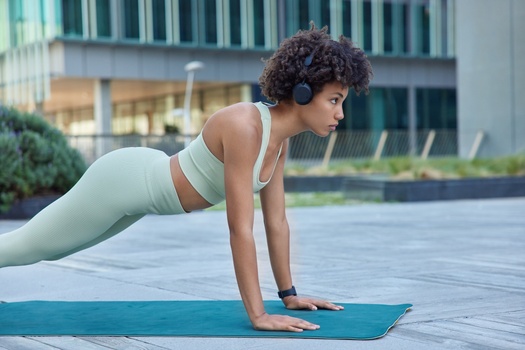
Start in a tabletop posture, inhale, and straighten your legs behind you. Engage your shoulders and core for a firm hold and to activate blood circulation. Ensure that your neck, tailbone, and legs are aligned in one straight line. Hold this pose for one minute or until you feel your core burning.
2. Trikonasana (Triangle Pose) - Start by standing in the mountain pose with wide legs. Place your right foot parallel with the back of the mat and keep your left foot pointing forward. Extend your arms to form a T, maintaining a slight bend in your knee joints. Inhale and align your gaze with your foot pointing forward.
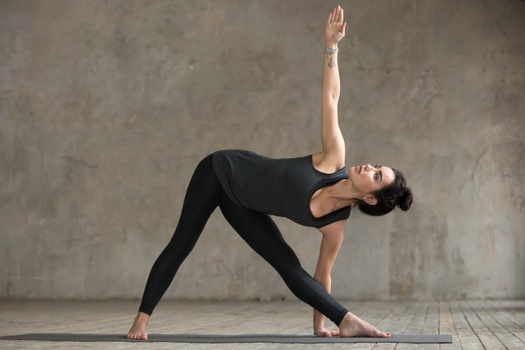
Exhale while extending your torso to the right with momentum in your hip joint. Bend forward and sideways by placing your left palm on your left shin or the mat. Hold this pose for a minute on each side, with an awareness of a deep stretch in your side obliques and hamstrings.
3. Supta Padangusthasana (Reclining Hand-to-Big-Toe Pose) -
This pose will help ease any tightness in your lower back, hip flexors, or glutes. Simply lie down on your back and inhale deeply. Now, exhale and bring your right leg close to your chest.
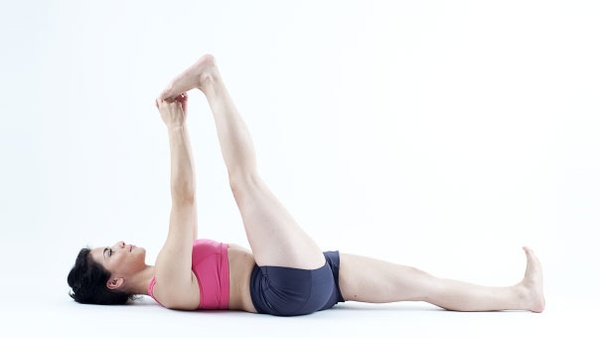
Engage your core, tucking your tailbone into the ground. Hold the big toe of your right leg and extend your leg towards the ceiling. Keep your left leg flexed on the ground and hold this pose for one minute on each side.
Part 2: Step-by-Step Instructions to Perform Anantasana
The following are steps to practice the Sleeping Vishnu Pose:
Step 1- Start by lying on the yoga mat in a Corpse Pose. Now, roll over onto your right side.
Step 2- Bend your right arm and rest your head on your right palm. Keep your legs flexed and straightened sideways, one on top of the other.
Step 3- Inhale, bend your left leg and bring it to your waist. Hold your big toe with your left hand. Now, exhale and extend your left arm and leg towards the ceiling or sky.
Step 4- Maintain your balance on one side by keeping your core muscles engaged. You can also close your eyes and concentrate on your breathing for prolonged balance.
Step 5- Finally, release your toe, get back into Corpse Pose, and repeat the same on the other side.
Breath Awareness:
Inhale - While bringing your leg close to your waist.
Exhale - While extending your leg and arm upright.
Performance Duration for Beginners: Hold the Sleeping Vishnu Pose for 1-2 minutes on each side.
Performance Duration for Advanced: Hold the Sleeping Vishnu Pose for 2 to 5 minutes on each side.
Part 3: Things to Keep in Mind
Here are some posture-related cues for beginners to follow while performing the Sleeping Vishnu Pose.
Do not over-flex your legs: Over-flexing can cause tears in your hamstrings, abductors, or glute muscles. So, as you get into Anantasana for the first time, make sure you’re observant of your body and mindful of your limits while developing strength in your legs while performing this pose.
Keep your core tight: If you cannot stabilize your body in the Vishnu Pose, you may have a weak core, or failing to engage your core muscles properly. To engage your core, tighten up your navel, thighs, side obliques, and glutes. Loose muscles will make the balance of this pose more challenging.
Part 4: Relaxing Poses After Anantasana
Relax your glutes, low back, abductors, hip flexors, and shoulders after a long session of the Sleeping Vishnu Pose with the below follow-up yoga asanas:
1. Sleeping Vishnu Pose Legs Resting Variation - When you are done flexing one leg up in Anantasana, place your leg back on the top of your resting leg.
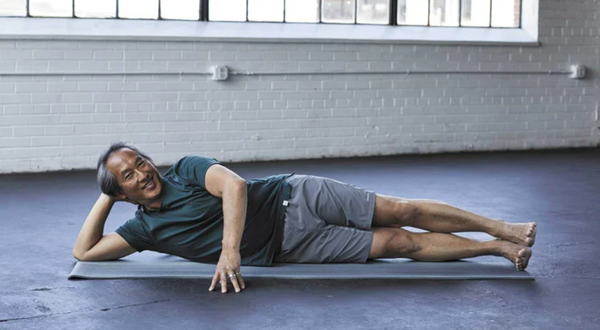
This will allow your body to cool down completely. Also, this way, you can prevent any immediate tension or spasms in your lower back.
2. Savasana (Corpse Pose) - After completing the vishnu pose practice on both sides, it’s best to cool down your back, shoulder, and legs.
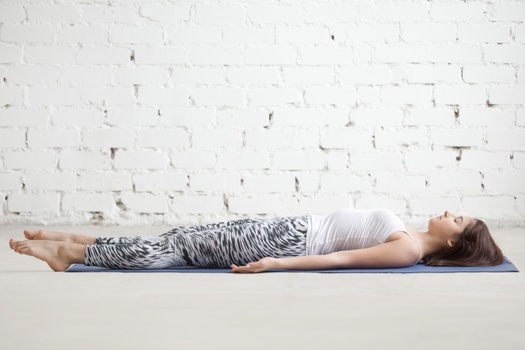
Gently lie down with your back flat on the mat in the Corpse Pose and close your eyes as you focus on your breath for 5 to 10 minutes.
